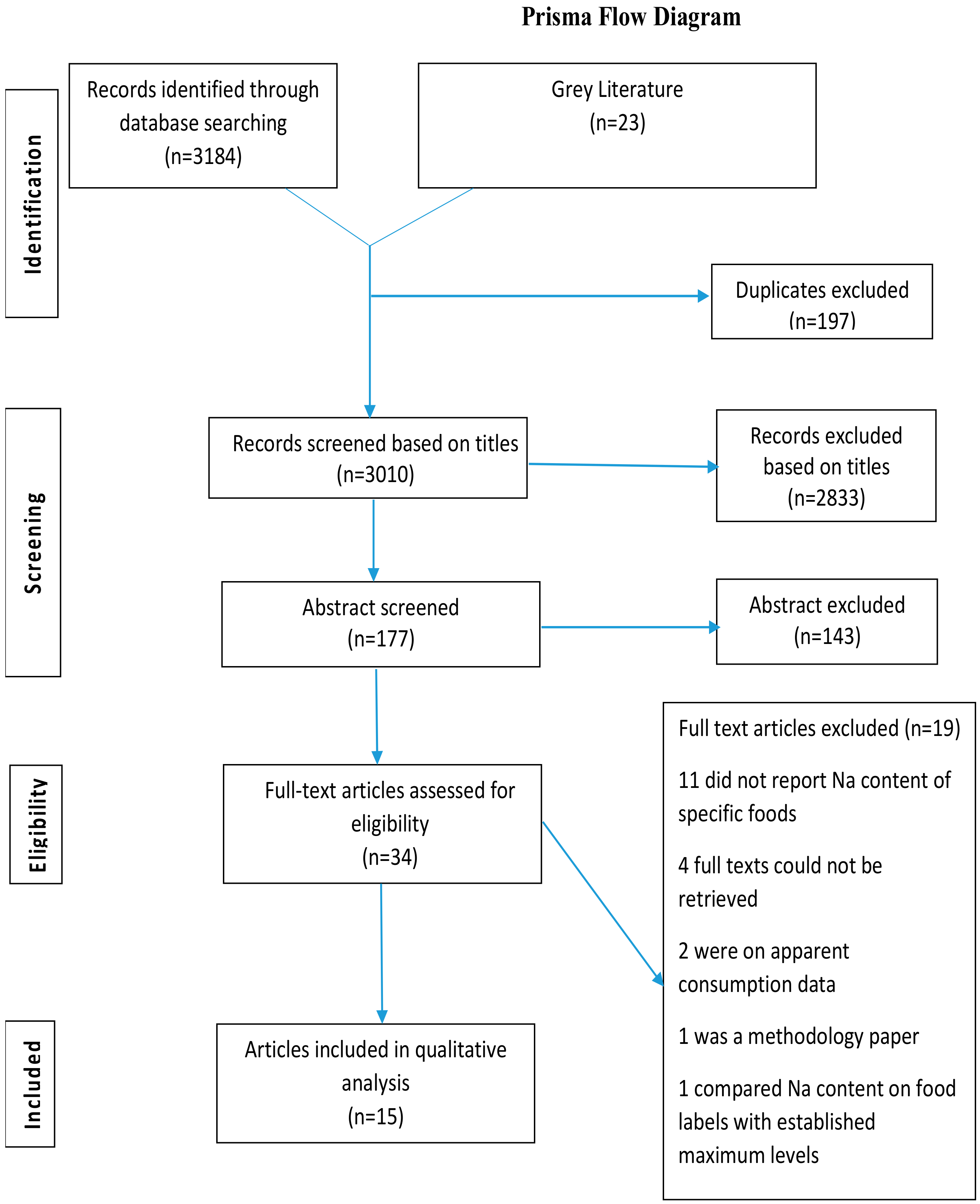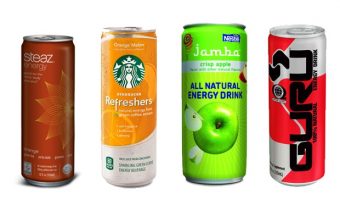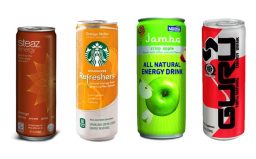45 analyze food labels for energy content
Chapter 3: Calculation of The Energy Content of Foods - Energy ... Determining the energy content of foods depends on the following: 1) the components of food that provide energy (protein, fat, carbohydrate, alcohol, polyols, organic acids and novel compounds) should be determined by appropriate analytical methods; 2) the quantity of each individual component must be converted to food energy using a generally a... PDF Calorimetry: Measuring the Energy in Foods - Carolina.com 5. Calculate the energy content of the food in kilocalories/gram. 1.65 kcal/1.5 g = 1.1 kcal/g 6. Using information on the nutrition label of the food sample, calculate the food manufacturer's kilocalories/gram. (Divide calories per serving by the number of grams in a serving.) 90 Cal/ 38 g = 2.37 kilocal/gram 7.
Kami Export - CHEM21_CO_01_Analyze_Data_Explore_IWS (1).pdf - NAME DATE ... Our bodies need energy and this energy would be the nutrients that are in foods like carbs, fats, and proteins, etc. We gain energy by consuming it and the body taking the nutrients from the food. 3. SEP Evaluating Claims Marian claims that Food A has slightly more than three times the Calories as Food B. Johan claims that Food B has more Calories.

Analyze food labels for energy content
How to Determine the Nutritional Value of Food - FoodCrumbles The energy content of a food is given in kcal (often referred to as Calories) and/or kJ (kilojoule). Converting from kcal to kJ is a simple set calculation 1 kcal = 4,18 kJ Set conversion values Research has shown how much energy our body can make from these macronutrients. We know that: 1 gram of fats provides 9 kcal of energy Food Energy - an overview | ScienceDirect Topics The metabolic expenditure by an animal is often measured as the amount of heat produced; this is usually called respiration (R).The difference between M E and R is retained energy, usually termed production (P): M E −R=P.When an animal is deprived of food (C=0), body tissues are catabolized in order to support R, P is negative, and the animal loses body mass. Understanding food labels: portions, energy - Health24 Energy value a) Kilojoules As South Africa is a metric country, the energy value of foods must be expressed in kilojoules (kJ). So, if a food's energy value is listed as 500kJ per portion, then this is how much energy you will ingest when you eat a portion of this food. b) Calories or kilo-calories
Analyze food labels for energy content. Food labels - NHS These labels provide information on the number of grams of fat, saturated fat, sugars and salt, and the amount of energy (in kJ and kcal) in a serving or portion of the food. But be aware that the manufacturer's idea of a portion may be different from yours. Some front-of-pack nutrition labels also provide information about reference intakes. When it comes to reading food labels, what's most important? When it comes to reading food labels, what's most important? · Serving size. Check to see how many servings the package contains. · Fiber. Eat at least 5-10 grams ... CHAPTER 3: CALCULATION OF THE ENERGY CONTENT ... Determining the energy content of foods depends on the following: 1) the components of food that provide energy (protein, fat, carbohydrate, alcohol, polyols, ... The Science Behind Calories and Nutrition Facts Labels The calorie number we see on food labels refers to a kilocalorie (kcal), which is also known as a large calorie or a food calorie. A kilocalorie is 1 000 calories. One kilocalorie is the amount of energy it takes to heat one kilogram of water one degree Celsius at sea level.
Food labelling - Food and nutrition | NHS inform Nutrition labels must display the amount of energy (calories and kilojoules) and the amount of fat, saturated fat, carbohydrates, sugars, proteins and salt (all expressed in grams) present in 100g (or 100 ml) of the food. In addition to the mandatory requirements above, nutrition information may also be expressed per portion provided the number ... Food labels & nutritional information | Raising Children Network Fats, protein and carbohydrates all provide your body with the energy or kilojoules you need to function and do your daily activities. When comparing similar foods, lower energy usually means lower fat or sugar, which means that the food is a better choice for most people. Fat, sugar and salt How to read food labels | healthdirect nutritional information (such as average amount of energy, fat, protein, sugars and salt); percentage labelling (how much of the main ingredients it contains, ... How to Calculate Energy From Foods - LIVESTRONG.COM Step 2 Multiply grams of protein in the food by 4 calories per gram. It does not matter what kind of protein a food contains; all proteins provide the same energy per unit mass, because they're all composed of the same basic building blocks, explain Drs. Reginald Garrett and Charles Grisham in their book "Biochemistry." Step 3
Energy Content of Food Lab Report Answers - SchoolWorkHelper Takedown all the readings. Repeat steps 1 to 12 for 3 times for each different type of chip. Find the average initial temperature, final temperature, and mass of the food sample. Use the formula, Energy = Volume of water x (initial-final temperature) x 4.2/ mass of food sample. For each different type of chips READ: The Importance of Reading the Food Label and Nutritional Facts The label changes now require that vitamin D, potassium, iron and calcium content be included here, along with the percent daily values for each. You should aim for high levels of these nutrients. Vitamins A and C are no longer required, but they are still important to our diets. 6. Ingredient List Finally, there's the ingredient list. The Basics of the Nutrition Facts Label Step 4: Check Out the Nutrition Terms. Low calorie: 40 calories or less per serving. Low cholesterol: 20 milligrams or less and 2 grams or less of saturated fat per serving. Reduced: At least 25% less of the specified nutrient or calories than the usual product. Good source of: Provides at least 10 to 19% of the Daily Value of a particular ... PDF Better Nutrition by Analyzing Food Labels - Dartmouth Lynda R. Wiest College of Education University of Nevada, Reno October 2002 Better Nutrition by Analyzing Food Labels Suggested Grade Levels: 7 and up Possible Subject Area(s): Health; Consumer Education Math Skills: calculating percents; writing formulas; reading, interpreting, and graphing data Overview: Students will learn how to interpret food labels and analyze the nutritional
How is the caloric value of food determined? - McGill University A food calorie is actually a "kilocalorie.". In other words it is the amount of energy needed to raise the temperature of one liter of water by one degree. Originally, the calorie content of a food was measured in a calorimeter. A known amount of food, which has had its water content evaporated, was placed in a container surrounded by a ...
Food Labels | Nutrition.gov Food and Drug Administration (FDA) regulates the safety of food for humans and animals, including foods produced from genetically engineered (GE) plants, sometimes referred to as "genetically modified organisms" (GMOs). Find out more about the safety of GE plants, and how they are regulated here. Feed Your Mind: Agricultural Biotechnology/GMOs
How to understand food labels - Eat For Health The Nutrition Information Panel on a food label offers the simplest and easiest way to choose foods with less saturated fat, salt (sodium), added sugars and kilojoules, and more fibre. It can also be used to decide how large one serve of a food group choice or discretionary food would be and whether it's worth the kilojoules.
How To Read Food and Beverage Labels - National Institute on Aging There are three types of product dates commonly printed on packaged foods and beverages: "Sell by" tells how long the manufacturer suggests that a store should sell items such as meat, poultry, eggs, or milk products. Make sure you buy by this date. "Use by" tells how long items will be at peak quality.
How Do You Know Your Food's Nutrition Facts Label Is Accurate? The short answer. Manufacturers often confirm their nutrition numbers by matching their products as closely as possible to NIST's food reference materials, which contain precisely measured quantities of nutrients. NIST's measurements are accurate to within 2% to 5% for nutrient elements (such as sodium, calcium and potassium ...
Analyze_Data_Explore_Per 2.docx - NAME DATE CLASS ANALYZING... The label provides useful information for identifying the energy content of food, the source of that energy, and other nutritional information. The figure shows two sample food labels. Notice that the largest font on the labels is used to show Calories, with a capital C.
PDF Procedures for Estimating Nutrient Values for Food Composition Databasesa JOURNAL OF FOOD COMPOSITION AND ANALYSIS 10, 102-114 (1997) ARTICLE NO. FC970527 ... Food manufacturers determine the nutrient content of their prod-ucts for food labels. Cookbook authors calculate nutrients in a serving of each recipe. ... Energy. The Atwater method of energy calculation uses factors to calculate energy from protein, fat ...
Menu labels displaying the kilocalorie content or the exercise ... Purpose: Determine the effect of menu labels displaying the energy content of food items or the exercise equivalent on energy ordered and consumed at lunch and energy intake for the remainder of the day in young adults. Design: Subjects were randomized to a menu with no labels (no-labels), menu with kilocalorie labels displaying the energy content of the food items (kcal-labels), or menu with ...
PDF Food Labeling Guide - Food and Drug Administration Additionalcopies are available from: Office of Nutrition, Labeling, and Dietary Supplements HFS-800 Center for Food Safety and Applied Nutrition Food and Drug Administration 5100 Paint Branch...
Labelling-Determination of the energy content of food Currently used polyols include sorbitol and erythritol. Carbohydrates give average gross energy values of 4.2 kcal or 17.6 kJ per gram, fat gives 9.4 kcal, or 39.4 kJ per gram and protein gives 5.65 kcal or 23.7 kJ per gram. The conversion factors for joules and calories are: 1 kJ = 0.239 kcal; and 1 kcal = 4.184 kJ.
PDF Energy Content of Foods Your Name Lab Partners: Period: January 28, 2013 Heat Energy = (mass of water) * (specific heat) * (change in temperature) 50.0 g x 4.184 J/g°C x 1.5 °C = 313.5 J Energy content per gram = Heat Energy / Mass of Burned Food 313.5 J / 0.1 g = 3135.0 J/g Data Analysis The food with the highest energy content per gram was the peanut.
Investigating the Energy Content of Foods - Vernier You can determine energy content of food by burning a portion of it and capturing the heat released to a known amount of water. This technique is called calorimetry. The energy content of the food is the amount of heat produced by the combustion of 1 gram of the food, and is measured in kilojoules per gram (kJ/g). Objectives
Energy labelling of alcoholic beverages - Food Standards In December 2021, FSANZ completed a preliminary analysis of regulatory and non-regulatory options for energy labelling of packaged alcoholic beverages to identify a preferred approach. This included targeted consultation with industry, public health, consumer and jurisdictional stakeholders. The key outcomes were:
Reading Food Labels (for Parents) - Nemours KidsHealth The food label gives total carbohydrates along with fiber, total sugars, and added sugars. Dietary Fiber Dietary fiber itself has no calories and is a necessary part of a healthy diet. Fiber can help you feel full and promotes bowel regularity. High-fiber diets can help lower cholesterol levels and may help reduce the risk of colon cancer. Sugars
How to Understand and Use the Nutrition Facts Label - FDA Dietary fiber, vitamin D, calcium, iron ad potassium are nutrients on the label that Americans generally do not get the recommended amount of. They are identified as nutrients to get more of....
Food labels - Better Health Channel Kilojoule (energy) labelling on unpackaged, ready-to-eat foods — These symbols display energy (kilojoules), and other nutrients (such as fat, ...













Post a Comment for "45 analyze food labels for energy content"